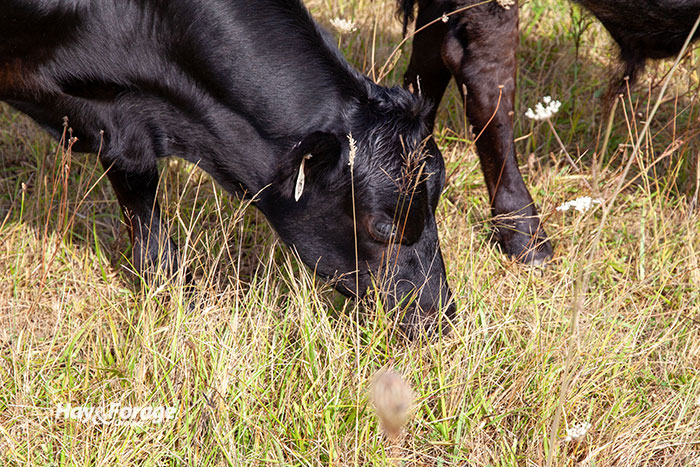
Sometimes grazing cattle need help reaching their nutrient needs with supplemental feed. And when dry weather puts a damper on forage growth, supplementation must become a bigger priority.
Like many areas across the country right now, parts of North Dakota light up on a drought map of the U.S., with about 30% of the state currently experiencing some level of drought. Extension specialists with North Dakota State University urge farmers in similar situations to keep drought-stressed pastures from becoming damaged and overgrazed by reducing their stocking density and/or providing livestock with supplemental feed.
Miranda Meehan explains stocking density can be reduced by removing animals from the herd or shortening rotational grazing periods. The livestock environmental stewardship specialist notes even with a lower stocking density, cattle could still require supplementation to take in enough energy and offset nutrient deficiencies if they are grazing drought-stressed pastures.
A few options
Dry hay is a popular option for supplemental feed, but if drought conditions are limiting pasture productivity, they have likely had a negative impact on hay yields as well. If forage is available, give livestock approximately 0.5% of animal body weight of dry hay per day to replace pasture intake.
If hay stocks cannot support supplemental feeding, some alternatives include cereal grains or fibrous by-product ingredients like soyhulls, distillers grains, brewers grains, and beet pulp; however, Zac Carlson notes these substitutions must be economical and maintain animal nutrition and digestion.
“Factors that should be considered when making decisions about supplementations include forage supply, protein content, body condition, and costs and availability of supplements,” the extension beef cattle specialist says.
Compared to dry hay intake, limit the amount of grain-based supplementation to 0.25% of animal body weight. The starch and sugar in grain crops will lower ruminal pH and make it harder for cattle to digest the forage they do consume in the pasture. This will ultimately reduce their energy intake and worsen forage utilization.
Some grains must also be processed to be effective supplements. For example, nutrients in corn and oats are made more available in the rumen if they are rolled before feeding as opposed to being fed whole. Likewise, barley and wheat must be processed.
Fibrous by-product ingredients, on the other hand, contain low levels of starch and sugar and tend to be highly digestible. For this reason, they must be fed at rates of 0.6% of animal body weight or greater to make up for forage intake.
If pasture conditions are already poor, consider removing livestock from grazing acres completely. The extension specialists note it may be more cost-effective to feed animals in a dry lot rather than transporting large amounts of supplementation to the field every day. Further, resting tired pastures will help forage make a stronger recovery after drought.

